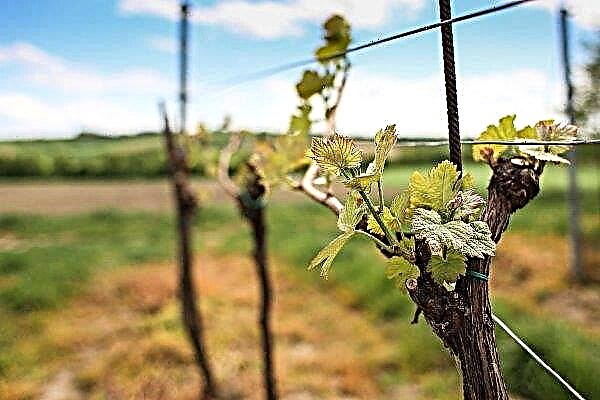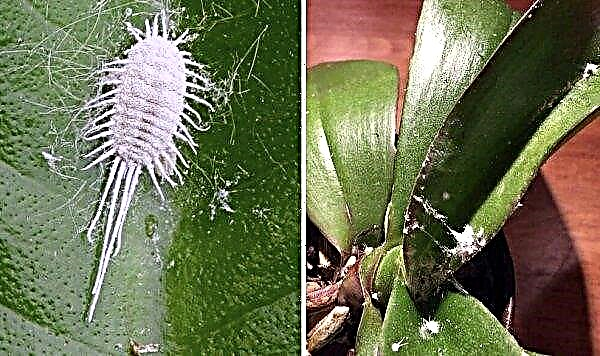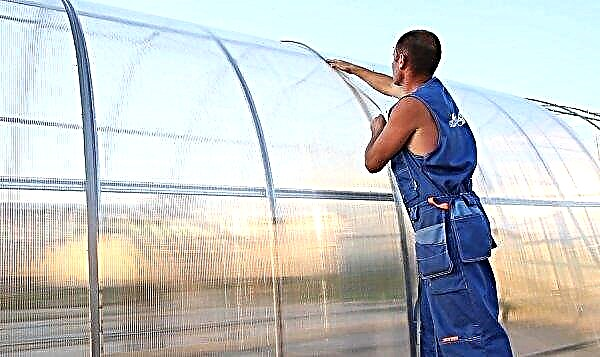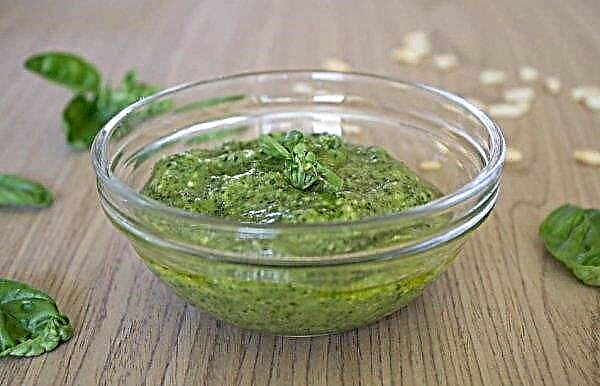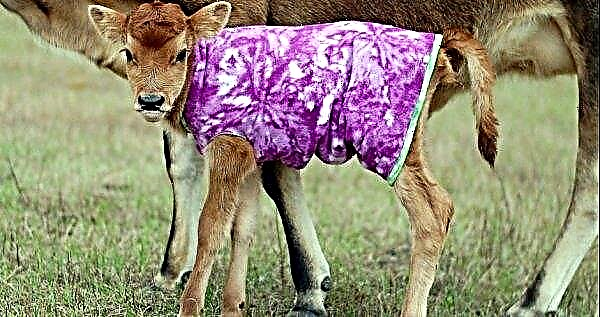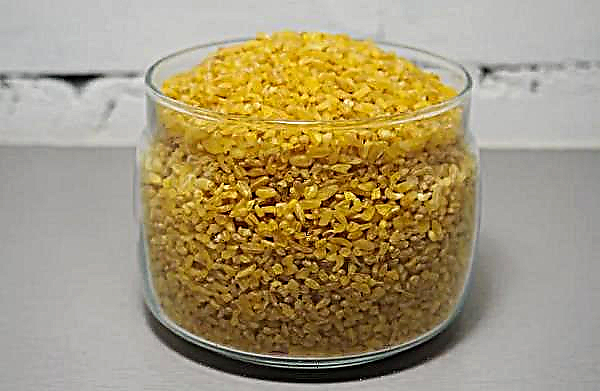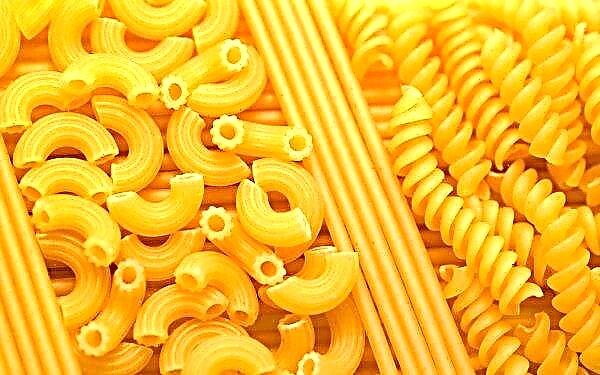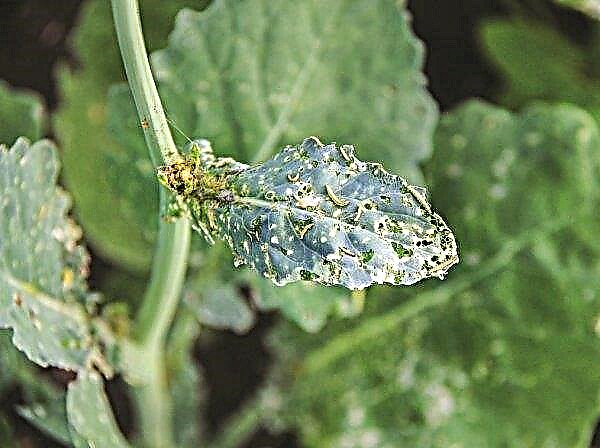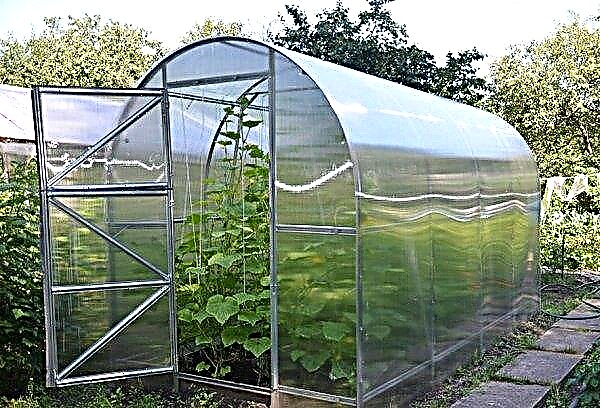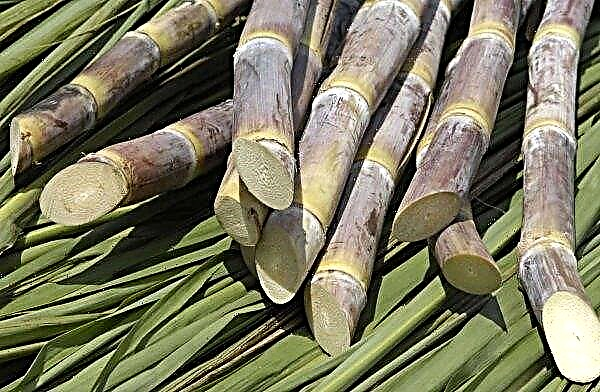Pereskia is an ornamental plant from the cactus genus. The uniqueness of this flower is the presence of foliage, which is unusual for succulents. Sometimes it is called primitive, due to the fact that for many centuries of its existence it has not overgrown with thorns. Nevertheless, she gained immense popularity among gardeners and a florist due to her unusual appearance.
Botanical description of the plant
Peresia is a leaf cactus. This plant lives in South America. And although the equatorial territories are considered to be the primordial territory, Pereskis perfectly take root in many houses with proper care.
Did you know? This plant is named after the French scientist Nicolas-Claude de Peiresca.
At its core, peresia is a winding bush, the leaves of which are both green and reddish, and the thorns are only on the stem. At Peresia cactus, flowering occurs in summer and autumn, forming inflorescences on new shoots. The flower of this plant is different from other cactus-like, since there is no tube in its structure. It resembles a rosehip flower, as it has 8 petals.
At Peresia cactus, flowering occurs in summer and autumn, forming inflorescences on new shoots. The flower of this plant is different from other cactus-like, since there is no tube in its structure. It resembles a rosehip flower, as it has 8 petals.
The bud has a core in which stamens are located. Fruits appear immediately after the pereskia has faded.
| Root system | powerful |
| Stem | thin, covered with hairs |
| Leaf shape | lanceolate |
| Leaf color | green with a purple hue |
| Flower shape | cupped |
| Flower color | white pink |
| Fruit shape | round, oval |
| Fruit color | beige, yellow, shiny |
| Fruit flavor | sweet and sour |
Main types
In general, there are 17 types of pereskia throughout the world.
In the natural environment, they grow quite large, in apartments and offices, the Peresia bush looks like an ordinary ornamental indoor plant:
- Peresia Rose Hip a very common subspecies of cacti. The plant grows tall. The stem is well developed, covered with small thorns. Leaflets grow up to 9 cm in length, their width is 4 cm, color is green. The flower is bright yellow or pink, has a strong aroma. The shape of the berries is similar to gooseberries.
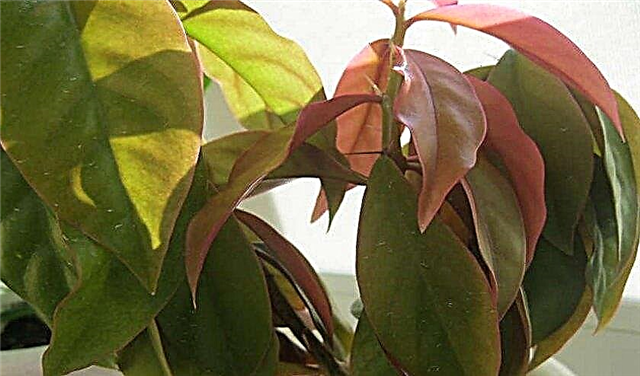
- Godseff. This subspecies has a thin stalk, which is covered with long spines of black color. Short turtles lanceolate leaves are attached to the trunk. Leaf length - 6 cm, has a light green hue, in the center - bright green. On the wrong side, the leaf has a pink color that turns into a purple hue. Bloom in white or beige inflorescences.

- Orange Pereskia. The stem is underdeveloped, places large leaves with a relief pattern on it. Flowers are orange with a touch of red, similar in size to poppy heads. Their diameter is 6 cm. The fruits of the plant are yellow, conical in shape, smell like pineapple.
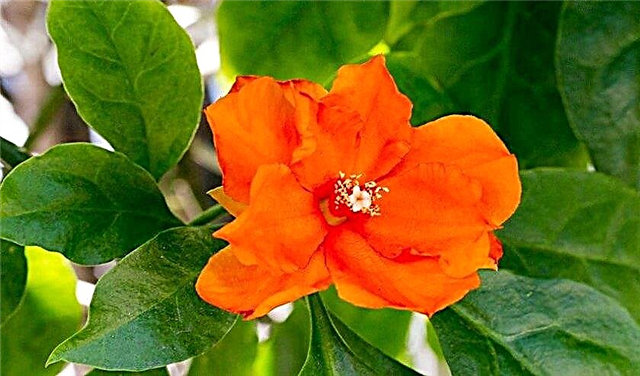
- Pereskia Grandiflora. This variety has the shape of a bush densely strewn with foliage. At a temperature of + 10 ° C, this species discards a small amount of foliage. The flowers are large, pink.
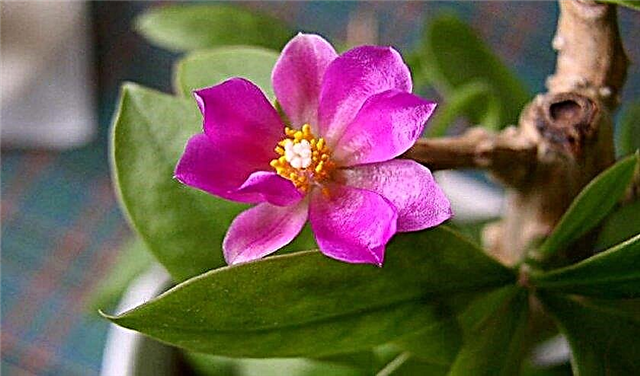
- Weber. Formed in the form of a small bush. During flowering, the plant gives an abundant color from white inflorescences. Flowering occurs in April-August.
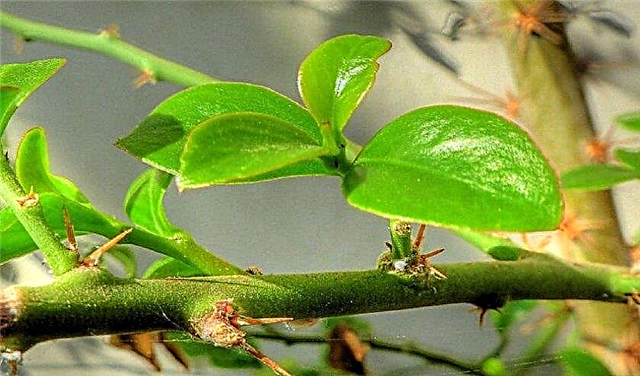
House growing conditions
Any plant needs care for it. The correct conditions for growing Pereskia at home will help to preserve this unique plant for many years, as well as contribute to its reproduction.
Important! It is not recommended to use organic fertilizers as top dressing, since they have a high concentration of nitrogen, which contributes to the decay of the root of the flower.
The main conditions for growing this plant are the following factors:
- lighting;
- ventilation;
- temperature condition.
Lighting
The birthplace of the flower is sunny South America, and therefore he loves light very much. It is best placed on the south side. In summer, it is necessary to create an additional shadow so that the leaves do not burn and the flower does not die. This can be done by rearranging the cactus pot in the darkened part of the house.
Ventilation
Another important factor in protecting the flower during the heat is airing, but it is useful not only in summer. Airing helps to protect leaves from sunshine and burns.
Since peresia is not afraid of drafts, many flower growers recommend taking the bush to the balcony or to the garden in the summer, but it is necessary to protect it from rain.
Temperature mode
The most suitable temperature for a cactus is +22 .. + 24 ° C. In summer and on other hot days, it is required to ventilate the room in which the flower is located. In autumn, the temperature is gradually reduced to + 12 ° C. At this moment, the flower is resting.
In autumn, the temperature is gradually reduced to + 12 ° C. At this moment, the flower is resting.
Important! Temperature below + 11 ° С is fatal to the plant.
How to care at home
Pots with peregium bushes are used for landscaping apartments. If you have already planted this plant, do not forget to look after the cactus so that it grows and delights you with its beautiful flowers.
Peresia is undemanding in care, but nevertheless proper watering, spraying, pruning and transplanting contribute to the accelerated development of the plant.
Watering
Watering is one of the important processes for the life of Peresia. You can water it as soon as you see that the ground at the base of the stem has already dried up.
Watering is necessary under the plant, the water is false completely absorbed by the flower. It is necessary to pour out its surplus that remains in the pan, since it can stagnate and fungi harmful to the cactus will form in it.
Did you know? In the absence of soft water, it can be softened by adding vinegar or citric acid.
With the beginning of winter, watering should be reduced to 1-2 times a month, otherwise the flower will begin to take off the leaves.
Water for irrigation should be soft, room temperature.
Spraying
Spraying is carried out with water at room temperature from the spray directly onto the leaves of the flower. On hot days, spraying is often carried out - 3-4 times a day. With the onset of cold weather less often - 1-3 times a month.
Top dressing
From the beginning of spring to autumn, it is necessary to fertilize the bush with a cross. Top dressing is applied to the soil once every 2 weeks.
For fertilizing, you can use fertilizers designed for cacti. They are sold in specialized stores.
Before applying fertilizer, it is necessary to dilute it with water in order to halve the concentrate. With an excess of concentrate, the root system of a plant can rot, from an excess of nitrogen in top dressing.
The optimal ratio of elements in fertilizers should be as follows:
- 9% nitrogen;
- 24% potassium;
- 18% phosphorus.
Pruning
Pruning is the procedure for removing excess branches to form a bush structure. Since Peresia is an ornamental plant, this must be done every year. Pruning is carried out in the spring, in the period before active flowering. The procedure involves cutting unnecessary petioles, as well as petioles that can burden the stem with clippers.
Pruning is carried out in the spring, in the period before active flowering. The procedure involves cutting unnecessary petioles, as well as petioles that can burden the stem with clippers.
Transfer
As soon as the flower outgrows its pot, it will be necessary to transplant it into a new container for comfortable growth. Transplantation is carried out in the spring, before the beginning of the vegetative period.
Young plants are transplanted 2-3 times a year, given the growth of stems. Adults - only if the root system completely fills the pot.
Fertile soil is used for transplantation, it must be loose in order to pass air well and absorb water, and also have humus in the composition.
When transplanting, as well as when transplanting, it is necessary to use large pots, since the plant has a strong root system.
Important! The soil for transplantation should consist of foliage, humus and sand in a ratio of 2: 2: 1.
Breeding
If you want to get another pot with this unique flower, do not rush to buy it. You can propagate the plant at home.
Reproduction of pereskia occurs in two ways. With the help of cuttings that are cut during pruning, and with the help of seeds that are in the fruit.
Cuttings
Cuttings for propagation are taken from the upper or stem part of the plant, they must have at least two nodules. Having cut the cuttings, they must be dried and placed in the prepared soil from sand and peat.
Having cut the cuttings, they must be dried and placed in the prepared soil from sand and peat.
They can also be placed in water, the temperature of which should be +25 ... + 28 ° C for several days, and after the root appears, it will be possible to transplant the sprout into a pot.
Seeds
For propagation using seeds, seeds from the fruits of peresium and a mixture of peat and loose sand are used. Sowing is carried out in early spring. Seeds are placed at a depth of 0.5-1 cm, watered abundantly and covered with a film. Soil temperature should be +20 ... + 22 ° С.
Within 2-3 weeks after sowing, the first seedlings appear, after which the film is removed and the plants are transplanted into pots.
Growing difficulties
Peresia is easy to grow at home.
However, there are some difficulties when growing pereskia, consider them below:
- Incorrect watering directly affects the root system. When decaying the roots, it is difficult to save the plant. It is necessary to carefully observe the regime of watering cacti.
- Untimely transplant. It is necessary to observe the growth of the plant, and transplant it in April or August.
- Incorrect lighting. Pereskia is a photophilous flower, it is necessary to place it in the southern part of the room, and in winter to compensate for the lack of sunlight using artificial lighting.
- The presence of pests.

Disease
The main disease is peresk - this is gray rot. This is a fungus that causes rotting of the roots and stem of the flower. To get rid of it, you need to treat the cactus with a fungicide, and then reduce the humidity near the bush.
Pests
Mealybugs deplete the stalk of the plant, and as a result, it dries. If you see a manifestation of this pest, remove them with a brush from the stem.
In addition, a tick or thrips can attack the cross. They live on the leaves, stems and roots of the plant and look like black dots. These pests can only be controlled with insecticides.
Knowing the rules of sowing and caring for the census, you can grow a beautiful plant at home and admire its flowering for many years. Also, having knowledge about all kinds of pests and diseases of this flower, they can be prevented in advance.






